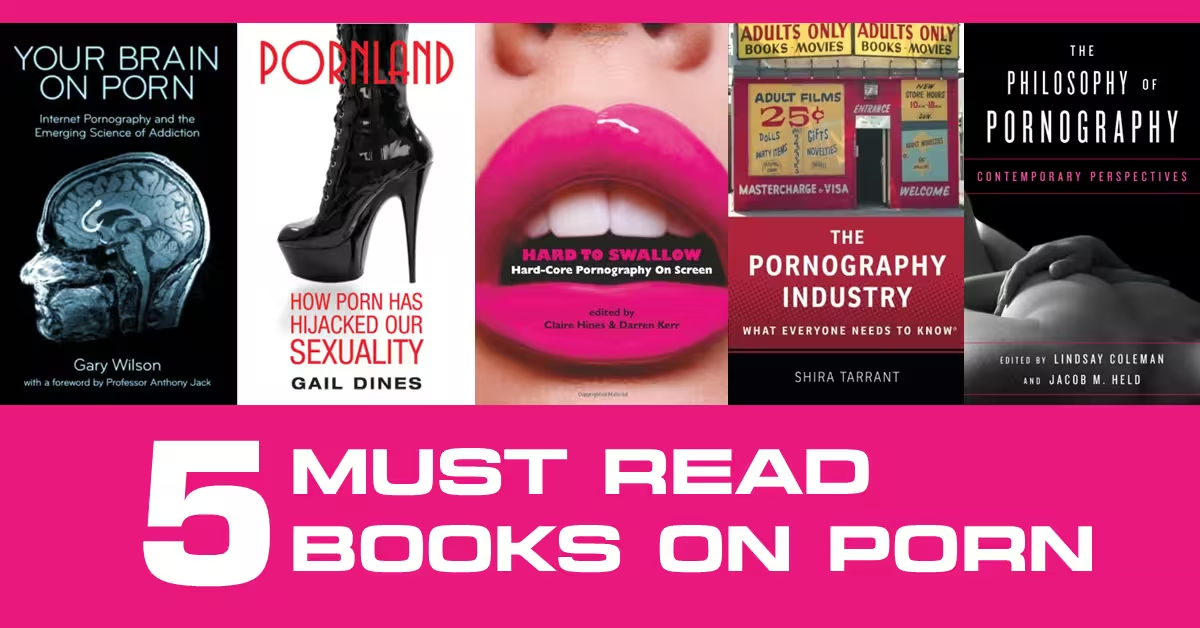Last updated on May 7th, 2025 at 07:49 pm
5 Must Read Books on Porn address the pressing concerns such as what drives human fascination with pornography? This is a question that several authors have sought to answer in profound and thought-provoking ways. These books go beyond mere titillation or judgment; they delve into the historical, psychological, and sociological aspects of pornography, offering readers a nuanced perspective on its evolution and impact on society.
Pornography has become a pervasive force in modern culture, shaping attitudes, behaviors, and even the way we view relationships.
While it may seem harmless to some, the reality is far more complex. From the neuroscience of addiction to the social and cultural implications, the five books we explore in this article provide crucial insights into the hidden dangers of pornography.
Authors like Gary Wilson, Shira Tarrant, Gail Dines, Claire Hines, and Darren Kerr confront the widespread impact of pornography on both individual minds and society at large. In this article, I delve into the profound lessons these experts offer, uncovering the undeniable grip pornography has on our brains and our cultural values.
Background
In recent decades, the proliferation of pornography, particularly through digital media, has significantly altered societal views on sex, relationships, and personal identity. The ease of access, ubiquity, and anonymity afforded by the internet have made pornography a central element in modern sexual experiences, impacting millions of individuals worldwide.
However, the role of pornography in society remains a hotly debated topic, eliciting a range of responses from condemnation to defense.
This article aims to explore the multifaceted dimensions of pornography through the lens of five influential books—Your Brain on Porn by Gary Wilson, The Pornography Industry: What Everyone Needs to Know by Shira Tarrant, Pornland: How Porn Has Hijacked Our Sexuality by Gail Dines, Hard to Swallow: Hard-Core Pornography on Screen by Claire Hines and Darren Kerr, and The Philosophy of Pornography: Contemporary Perspectives by Lindsay Coleman and Jacob M. Held.
Each of these works addresses different aspects of pornography, including its neurological effects, historical and legal context, societal consequences, artistic representations, and philosophical implications.
The cultural landscape surrounding pornography has evolved dramatically, prompting questions about its effects on brain development, relationships, gender dynamics, and even public health. Moreover, the debate about whether pornography should be classified as a form of free speech or as a dangerous tool that perpetuates harmful societal norms is far from settled.
The selected books collectively tackle these issues, providing readers with a comprehensive and critical exploration of pornography’s impact on the individual and society.
By examining the content, arguments, and perspectives in these works, this article seeks to shed light on the ongoing discussions surrounding pornography. Whether considering the biological effects of frequent consumption, the legal and economic forces driving the industry, or the ethical concerns about representation and consent, this analysis will present a holistic view of pornography’s complex and often controversial role in modern life.
5 Must Read Books on Porn
1. Your Brain on Porn by Gary Wilson
In Your Brain on Porn, Gary Wilson delves into the neurological impacts of pornography consumption, focusing on the brain’s reward system.
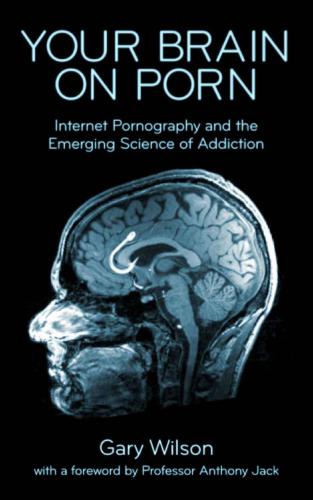
He presents compelling evidence that frequent exposure to pornography can lead to significant changes in the brain, akin to those seen in individuals addicted to substances like drugs or alcohol. Wilson asserts that the overstimulation of the brain’s dopamine system from constant porn consumption results in desensitization, requiring increasingly extreme material to achieve the same level of arousal.
Wilson’s arguments are striking because they align with the lived experiences of many individuals grappling with compulsive pornography consumption.
He notes that desensitization can lead to pornography-induced erectile dysfunction (PIED), a growing concern among young men. As someone who grew up in a digital age where pornography is easily accessible, I can relate to the concerns Wilson raises.
The immediate gratification provided by pornography can distort expectations of real-life sexual relationships, as I have shown in the article Pornography and Romance, leading to frustration and dissatisfaction.
Wilson’s work is particularly impactful because it goes beyond the moral debate, providing a biological framework to understand why pornography can become addictive.
A passage from Wilson that resonates deeply is his description of the brain’s reward system: “Pornography can hijack this system, promising quick and easy pleasure without the emotional and physical intimacy that comes from real-life relationships.”
Wilson’s book offers a necessary perspective on how pornography not only affects the mind but can also harm the body’s natural responses to intimacy.
2. The Pornography Industry: What Everyone Needs to Know by Shira Tarrant
Shira Tarrant’s The Pornography Industry offers a broad, academic overview of the pornography industry’s inner workings.
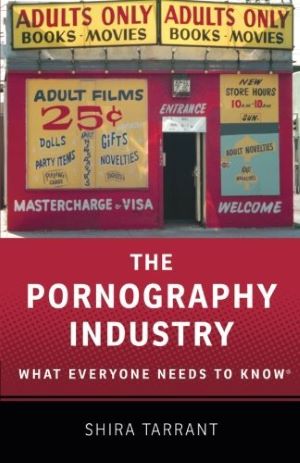
She outlines its history, the legal battles surrounding it, and its economic impact, providing readers with the necessary background to understand the industry’s prominence. Tarrant’s nuanced exploration stands out for its balanced portrayal of the industry—she highlights the exploitative nature of many aspects of pornography production, while also acknowledging that some performers find empowerment through their work.
Tarrant focuses on the historical evolution of pornography, tracing its trajectory from ancient erotica to the modern-day digital porn industry.
Tarrant highlights how technology, particularly the internet, has significantly increased the accessibility and consumption of pornography. This, in turn, has transformed the public and private conversations around sex, leading to greater societal impacts. The global reach of pornography today means it is no longer relegated to the margins of culture, but occupies a central position in shaping public views on sex, relationships, and even power.
Tarrant also details the distinction between erotica and pornography, emphasizing that the line is often subjective and culturally informed. As she notes, “One person’s pornography may seem like hate speech to the next person or like nothing at all to a third”.
This subjectivity introduces significant challenges in understanding the broader implications of pornography on societal norms and behaviors. Historically, pornography has existed in various forms, from ancient Greek depictions to more contemporary iterations that involve much darker, explicit content.
The intersection between technology and pornography has magnified this issue, especially as the digital era has exponentially increased the quantity and availability of pornographic content.
Tarrant’s narrative also examines the production side of pornography, shedding light on the power structures within the industry and how performers—especially women—are often vulnerable to exploitation.
She describes the high risks performers face, particularly regarding sexually transmitted infections (STIs) and health complications. The book stresses the industry’s capitalistic nature, where the bottom line is profit, often at the expense of performers’ health and dignity.
However, Tarrant acknowledges the agency of some performers who choose the industry as a career, complicating the narrative of total exploitation.
One of the most striking elements of Tarrant’s work is her discussion of the legal protections surrounding pornography, particularly in the context of the First Amendment.
She presents pornography as a complex cultural artifact, one that is both a symbol of free speech and a product of capitalist exploitation. In her discussion of the rise of the internet and digital platforms, Tarrant emphasizes how pornography has become increasingly accessible, leading to shifts in public attitudes about sex.
Tarrant reports that over 70% of men have watched porn compared to 30% of women. Men’s preferences tend to align with more aggressive and degrading content, while women’s consumption is more nuanced and often tied to partner influence.
She writes, “The sheer volume and variety of pornography available online has blurred the lines between mainstream and fringe, pushing what was once taboo into everyday life”.
As I reflect on Tarrant’s analysis, I find her portrayal of the industry’s contradictions enlightening. She offers a balanced view of pornography as both a form of entertainment and an exploitative industry, making it clear that the debate about pornography cannot be easily resolved. Her discussion of the agency of performers—who are often depicted as victims—adds depth to the conversation, as she acknowledges the complexities of choosing to work in the industry.
3. Pornland: How Porn Has Hijacked Our Sexuality by Gail Dines
Gail Dines’ Pornland takes a much more critical stance on pornography, particularly its impact on women and the broader societal consequences of mainstream pornography consumption.
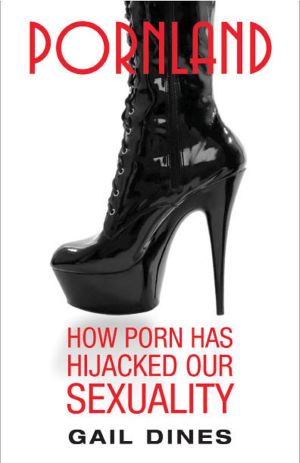
Dines argues that pornography has distorted sexuality, creating a culture where violence and degradation are normalized in sexual relationships. Her focus on the rise of “gonzo” pornography—a genre that emphasizes extreme and often violent sexual acts—highlights how the industry has shifted towards content that dehumanizes women and glorifies male domination.
Gonzo, characterized by its lack of plot and its focus on body-punishing sex, promotes a view of women as disposable and existing solely for men’s pleasure.
Dines offers a more critical feminist perspective, focusing on the detrimental effects of pornography on society, especially concerning the objectification and degradation of women. In Pornland, Dines argues that pornography is not merely a private, individual choice, but a powerful industry that commodifies and distorts sexuality.
She links pornography’s increasing violence and extremity to what she calls the “industrialization of sex”. Dines details how this commodification impacts both men and women, particularly young men who consume pornography as a means of sexual education. As she points out, young men today are exposed to pornography as early as age eleven, which often results in the distortion of their perceptions of sexuality, love, and intimacy.
Dines’ work is powerful because it confronts the uncomfortable realities of mainstream pornography head-on. She writes, “Pornography has hijacked the natural sexual instincts of men and women, replacing them with commodified, dehumanized versions of sex where love, respect, and consent are absent”. As someone who has engaged with various forms of media throughout my life, I find Dines’ perspective unsettling but necessary. Her work forces us to consider the long-term effects of pornography consumption on how we view relationships, consent, and human connection.
In my experience, Dines’ arguments about the commodification of sex resonate deeply in my article Impact of Pornography on Society and Its 9 Destructive Impacts on Sociocultural Values That Should not be Underestimated 2023.
In a culture saturated with sexualized imagery, it can be difficult to separate authentic desire from the depictions seen in pornography. Her focus on the effects of pornography on young people is particularly concerning, as she notes that early exposure to violent pornography can distort perceptions of sex and intimacy in harmful ways.
Dines’s deep concern with this trend comes from her experience as a feminist and an educator. She recounts conversations with young men who express anxiety about the impact of pornography on their lives, recognizing that it has shaped their understanding of sex in ways that are limiting and harmful.
This underscores her argument that pornography has hijacked natural, human sexuality and replaced it with a commodified, dehumanized version of sex.
Dines’ work pushes readers to think critically about how pornography influences societal views on gender and power.
Dines says that, although men are the primary consumers of pornography, women’s consumption is rising, and couples increasingly watch porn together. However, significant gender disparities remain in how porn affects viewers.
Dines argues that men often fail to distinguish between pornographic fantasy and real-life sex, leading to frustration, anxiety, and dissatisfaction in their personal relationships.
This is particularly harmful for young men who have grown up with extreme forms of pornography, shaping their understanding of sexuality in damaging ways. One of Dines’s central arguments is that pornography has seeped into mainstream culture, normalizing hypersexualized images of women in everything from advertising to music videos.
The sexualization of media has created an environment where women, particularly young women, feel pressured to conform to porn-inspired beauty and behavior standards, including extreme grooming habits, such as full-body waxing, and adopting submissive sexual roles.
4. Hard to Swallow: Hard-Core Pornography on Screen by Claire Hines and Darren Kerr
Hard to Swallow provides a more artistic and cultural critique of hard-core pornography in a collection of essays by various contributors, offering insights into its representation in film and media.
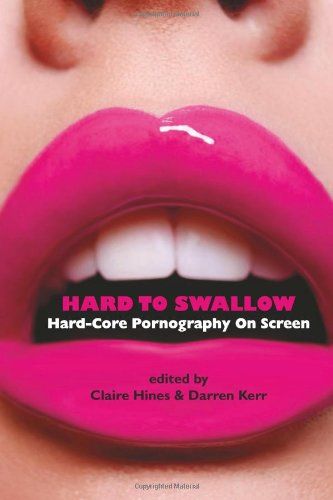
Editors Claire Hines and Darren Kerr compile essays that analyze pornography’s place in modern screen cultures, examining the aesthetics, ethics, and transformations of pornography over time.
The introductory essay, Is Hard-Core Hard to Swallow? by Hines and Kerr, sets the stage for the anthology’s intellectual depth. The editors pose a central question: Why is hard-core hard to swallow? This provocative inquiry underscores the duality of pornography’s allure and its societal taboo.
Through a recounting of their visit to New York’s Museum of Sex, they frame hard-core as a genre that treads the line between sexy and sleazy, legitimate and illicit. Their metaphor of the museum’s careful design encapsulates the broader struggle within academic and popular perceptions of pornography—how it attempts to legitimize itself without losing its raw, visceral essence.
The essays collectively argue that pornography, far from being a monolithic genre, is a site of artistic expression that also raises important ethical questions about representation, consent, and power.
Beth Johnson’s chapter, Shortbus: Highbrow Hard-Core, investigates John Cameron Mitchell’s film as an intersection of explicit sexuality and cinematic artistry. The film’s vérité style and collaborative storytelling redefine hard-core by situating sex acts as central to emotional and intellectual growth.
Mitchell’s emphasis on the Sex Film Project positions his work within a highbrow framework, distinct from conventional pornography.
A pivotal scene, of Shortbus (2006), involves Sofia achieving a “sublime orgasm” that reflects “an opening up of her mind rather than just her body”. This depiction reclaims the orgasm from its reductive “money shot” aesthetic, aligning it with personal transformation.
For viewers, the film provokes questions about voyeurism and participation: “Voyeurism is participation,” declares one character, a line that implicates audiences in the narrative’s emotional stakes.
Brian McNair’s essay, “Pornography in the Multiplex,” offers a historical perspective, tracing pornography’s origins alongside cinema itself.
McNair contextualizes early stag reels as products of their time—”transgressive representations of hidden, private activities”. Yet, he critiques pornography’s enduring association with male spectatorship, noting its evolution into a more inclusive form, albeit still laden with gendered and moralistic critiques.
Linda Williams, in “White Slavery,” explores the ethnographic representations of women in stag films housed in the Kinsey Archive. Her work unveils the racialized and gendered hierarchies embedded in early pornographic narratives, raising ethical concerns about the exploitation and commodification of female bodies. This historical lens offers a stark reminder of the industry’s fraught legacy, challenging contemporary creators to rethink representation.
John Mercer’s essay on gay pornography unpacks the “power bottom” archetype—a figure that subverts passive sexual roles through aggressive agency. Mercer examines performers like Tristan Paris, noting how their “self-consciously aggressive delivery” destabilizes traditional hierarchies of active and passive sexual dynamics.
Mercer’s insights are particularly resonant in a media landscape increasingly attuned to fluidity in gender and sexuality.
One of the most interesting aspects of Hard to Swallow is its exploration of altporn, a subgenre of pornography that embraces individuality and alternative aesthetics. Feona Attwood’s essay, “Art School Sluts: Authenticity and the Aesthetics of Altporn” examines how altporn challenges mainstream pornography’s often rigid depictions of beauty and sexuality.
Attwood writes, “Altporn reclaims the erotic from the corporate, emphasizing individuality, diversity, and self-expression”. As someone who values artistic expression, I appreciate how Hard to Swallow presents pornography as a space where creativity and subversion can thrive, even as it recognizes the ethical complexities inherent in the genre.
The anthology also explores the intersection of pornography and film, providing readers with an understanding of how pornography has influenced mainstream cinema and vice versa.
In my view, this cross-pollination of ideas between pornography and other media highlights the ways in which pornography is not just an isolated form of entertainment but a cultural force that shapes our collective consciousness.
5. The Philosophy of Pornography: Contemporary Perspectives by Lindsay Coleman and Jacob M. Held
Finally, The Philosophy of Pornography offers a more abstract, philosophical examination of pornography’s role in modern life.
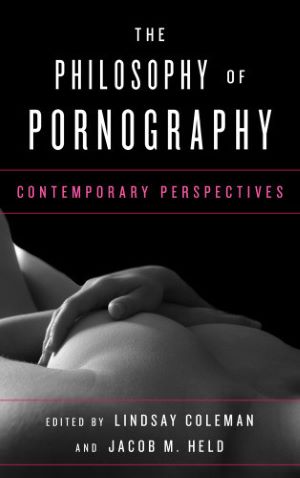
Editors Lindsay Coleman and Jacob M. Held present essays that address the ethical, political, and existential questions raised by pornography. One of the central themes of the book is the idea of “pornification,” the notion that pornography has permeated every aspect of modern culture.
As the editors write, “We live in a pornified world, where the aesthetics and sensibilities of pornography influence everything from fashion to film to advertising”.
The topic of pornography is often discussed in hushed tones or charged with strong emotions, particularly when considered from a philosophical perspective.
However, reflecting on its role in contemporary culture can reveal a broader view of human nature, identity, and the construction of gender and sexuality. Through “The Philosophy of Pornography: Contemporary Perspectives”, we gain access to a variety of insights about pornography’s impact on society, culture, and the individual.
Pornography, like any other human-created medium, is a reflection of culture. It often reveals hidden aspects of human desires and emotions, sometimes taboos or suppressed parts of our collective consciousness. As Lindsay Coleman and Jacob M. Held highlight in the book’s introduction, pornography’s presence in contemporary life is undeniable.
It pervades everything from digital platforms to pop culture, shaping our understanding of sex and gender in significant ways. The argument they make is not one of moral condemnation, but rather a call to seriously examine its role in shaping our identities. If we want to understand ourselves fully in this digital and interconnected world, we must also confront the effects of pornography.
One of the central philosophical questions that arises is whether pornography should be regarded as a legitimate form of expression or whether it has pernicious effects on its viewers. The editors point out that much of the public debate surrounding pornography is polarized.
On one side, there are crusaders who view porn as inherently harmful, linking it to violence and the exploitation of women. On the other side, proponents argue that pornography is a form of free speech and sexual expression that should be protected. The truth, as is often the case, is likely more nuanced.
From my personal perspective, the complexity of pornography’s role in society reflects a broader tension between individual freedom and collective morality. Pornography, in many ways, represents a paradox.
It offers a form of liberation for some, allowing individuals to explore sexual fantasies without judgment. Yet, for others, it reinforces damaging stereotypes and objectifies human bodies, particularly women’s bodies, in ways that can perpetuate unhealthy or harmful ideals. Coleman and Held explore these contradictions in detail, suggesting that pornography can’t be easily categorized as either purely beneficial or harmful.
It is part of a larger cultural web that includes issues of power, gender, and sexuality.
As Susanna Paasonen notes in her chapter on “Pornification,” digital media has made pornography both more accessible and more diverse than ever before. While this accessibility can lead to a broadening of sexual experiences and preferences, it also challenges the very notions of intimacy and privacy. In today’s world, our exposure to sexualized content begins at a younger age, and the boundary between public and private becomes increasingly blurred.
Growing up in the digital age, it is difficult to escape the omnipresence of sexual content. Yet, the more I ponder its philosophical implications, the more I realize that pornography does more than just titillate—it informs how we think about power, consent, and desire. In some cases, pornography can help break down traditional taboos and open up discussions about sexuality that were once forbidden, as discussed above.
In other cases, it risks normalizing practices and representations that may be unrealistic or unhealthy for a functioning society.
Coleman and Held also explore the deeper existential implications of pornography. As human beings, we are constantly searching for meaning, fulfillment, and connection. Sex, as one of the most primal human experiences, is an essential part of that search. However, when sex is reduced to a transaction of images or clips devoid of emotional connection, it risks alienating us from each other. Pornography, when consumed in excess or as a substitute for genuine human interaction, can create a false sense of intimacy that ultimately leaves individuals feeling isolated rather than fulfilled.
Furthermore, pornography’s impact on gender identity and roles is another crucial aspect to consider. As Matthew B. Ezzell explains in his chapter, pornography can act as a component of gender and sexual socialization, particularly for young men.
In many cases, pornography reinforces patriarchal ideals, positioning men as dominant and women as submissive. This not only skews the viewer’s understanding of real-world relationships but also contributes to the ongoing inequality between men and women in sexual contexts.
What crucial is perhaps cultivating a more critical and conscious approach to pornography, one that recognizes both its potential benefits and harms. By engaging with it as a cultural phenomenon, as Coleman and Held suggest, we can better navigate its role in our lives and in society.
Whether one sees it as a necessary outlet for human desire or as a destructive force in society, there is no denying its philosophical importance. We must engage with it thoughtfully and critically, recognizing its impact on both the individual and the collective.
However, what makes The Philosophy of Pornography unique is its ability to frame pornography as a lens through which to explore broader questions about human desire, identity, and power. The essays in this anthology ask readers to consider whether pornography is simply a reflection of our deepest desires or whether it shapes those desires in ways we may not fully understand.
Conclusion
Taken together, these five works provide a comprehensive exploration of pornography’s multifaceted impact on individuals and society.
From Gary Wilson’s examination of the brain’s response to pornography to Gail Dines’ scathing critique of its commodification of sexuality, each author brings valuable insights to the table.
Shira Tarrant’s exploration of the industry’s history and legal battles, Claire Hines and Darren Kerr’s artistic and cultural analysis of hard-core pornography, and Lindsay Coleman and Jacob M. Held’s philosophical reflections all contribute to a deeper understanding of this controversial and pervasive subject.
Reflecting on my own experiences and the insights from these works, I am struck by the complexity of pornography’s role in modern life.
It is both a source of pleasure and a site of exploitation, a form of artistic expression and a product of capitalist systems.
Ultimately, these books challenge us to think critically about pornography, not just as a form of entertainment, but as a reflection of our deepest desires, fears, and social structures. By engaging with pornography thoughtfully and critically, we can better understand its impact on ourselves and the world around us.
